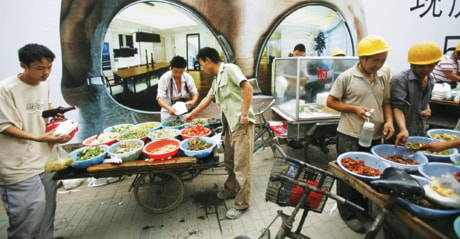BEIJING — China’s second-quarter growth accelerated on a stimulus-fed investment boom, the government reported Thursday, sparking a rise in Asian stocks on hopes the world’s third-largest economy could help to lead a global recovery.
The economy grew by 7.9 per cent from a year earlier, up from the first quarter’s 6.1 per cent growth rate, the National Bureau of Statistics said. Analysts said full-year growth should easily reach the 8 per cent target.
“This should give people confidence that China’s economy is on strong footing and that there are a lot better days ahead,” said Alan Landau, Hong Kong-based president of Marco Polo Pure Asset Management.
The pickup in growth reflected the effect of Beijing’s four trillion yuan (US$586 billion) stimulus, an effort to offset a collapse in exports by pumping money into the economy through spending on public works.
“We are in a blood transfusion-led economic recovery,” said Rock Jin, chief economist for Sinolink Securities Co. in Beijing.
Analysts expect China to be the first major country to emerge from the worst global slump since the 1930s. That could help propel global growth as it imports more raw materials, industrial components and goods.
In the United States, a Chinese recovery could help to boost exports of factory and construction equipment and farm goods such as soybeans. But the bulk of China’s imports are raw materials such as Australian iron ore and components from other Asian countries, so the direct impact on the United States and Europe might be limited.
China’s strong quarterly results, coupled with higher U.S. corporate profits, spurred a rally in Asian stocks. Markets in Tokyo, Hong Kong, South Korea and Singapore all rose. In mainland China, markets fell as investors took profits after a rally, but the benchmark index is still up 75 per cent this year on enthusiasm about the stimulus.
The International Monetary Fund raised its forecast of China’s 2009 growth this month by one percentage point to 7.5 per cent. The World Bank boosted its forecast last month from 6.5 per cent to 7.2 per cent, citing unexpectedly strong stimulus results.
Still, the Chinese government warned that despite the latest improvement, a full-fledged recovery is not firmly established.
“The difficulties and challenges in the current economic development are still numerous,” said a statistics bureau spokesman, Li Xiaochao. “The basis of the rebound of the people’s economy is not stable.”
Goldman Sachs said compared with the previous quarter — the way other major countries measure economic expansion — growth accelerated to a near-record 16.5 per cent on an annualized basis. JP Morgan said it calculated that sequential expansion at 14.9 per cent.
China’s growth sank last year as global demand for exports collapsed, wiping out up to 30 million factory jobs. But the economy was regarded as poised for a quick a recovery, with strong banks unhampered by the mortgage crisis that battered Western lenders.
State-owned banks have boosted lending to record levels, pushing new credit in the first half to a record 7.3 trillion yuan ($1.1 trillion) and sparking a revival in China’s real estate market.
Most of the stimulus has gone to state-owned construction companies and suppliers of cement and steel. But money is flowing to the private sector as builders hire workers and buy other materials.
Industrial output rose 10.7 per cent in June from a year earlier, faster than May’s 8.9 per cent growth, the statistics agency said. It said retail sales rose 15 per cent in the first half from a year earlier, while spending on factories and other fixed assets was up 33.5 per cent.
Sinolink’s Jin said 2.5 percentage points of the 7.9 per cent quarterly growth came from stimulus-financed investment and the rest from production.
Zhu Jianfang, chief economist for Citic Securities Ltd., said he expects growth to accelerate to nine per cent in the third quarter and into double digits for the final three months of 2009.
“I think the economy is in a fairly good recovery state,” Zhu said. “It’s not only stimulated by the government investment but also followed by some private investment. This is a positive change.”
The wave of positive data in recent weeks has encouraged investors, driving a stock market boom that has boosted China’s benchmark Shanghai Composite Index by 75 per cent since the start of the year.
The jump in lending and investment has prompted warnings from some analysts and even the central bank governor about a possible rise in bad loans and bubbles in real estate and stock prices. But most analysts say potential problems are still modest.
Li, the government spokesman, said Beijing is closely watching to make sure the stimulus does not ignite inflation.
“There are still quite a lot of uncertainties,” Li said. “We should remain watchful about changes in prices.”
